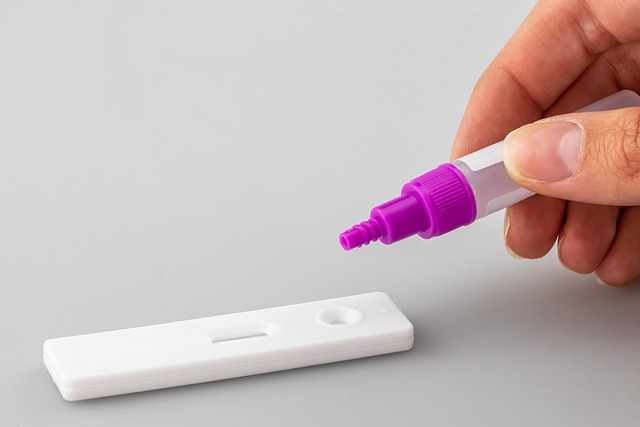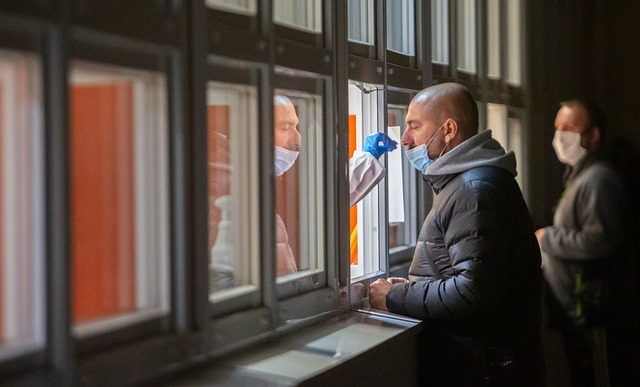Men's testosterone (T) levels are key for health, with declines causing hypogonadism. A simple blood test via a testosterone level test service diagnoses low T, essential for sexual function and overall well-being. Lifestyle changes, professional guidance, and accurate testing prepare men for treatment to restore T balance using HRT or other methods.
Low testosterone levels in men can cause a range of symptoms, from reduced energy and muscle mass to changes in sexual function. Understanding testosterone is the first step towards finding solutions. This article explores how to diagnose low testosterone using a key testosterone level test service, along with lifestyle changes and medical interventions that can help restore balance. By addressing this issue, men can improve their overall health and well-being.
- Understanding Testosterone Levels in Men
- Diagnosing Low Testosterone: The Test
- Lifestyle Changes for Balanced Hormones
- Medical Interventions and Treatment Options
Understanding Testosterone Levels in Men

Men’s testosterone levels play a crucial role in their overall health and well-being. It is a hormone that primarily contributes to sexual development, muscle mass, bone density, energy levels, and mood. However, as men age, their testosterone production naturally declines, leading to low testosterone levels. This condition, often referred to as hypogonadism, can manifest in various symptoms such as reduced libido, fatigue, muscle loss, and changes in body composition.
Understanding one’s testosterone levels is the first step towards managing any potential issues. A simple blood test, known as a testosterone level test service, can measure the hormone’s concentration in the body. This test is essential to determine if an individual has low testosterone (hypogonadism) or high testosterone levels, which can also have negative effects. Before undergoing this test, it’s recommended to follow certain guidelines, such as avoiding strenuous exercise and certain medications for a specified period, as these factors might influence the results. The testosterone test at home is another option gaining popularity; however, it may not be as accurate as a clinical setting, so it’s crucial to interpret results with caution.
Diagnosing Low Testosterone: The Test

Diagnosing low testosterone involves a straightforward process starting with a simple blood test. This testosterone level test service is crucial in determining if hormone levels are within the optimal range for men’s health and sexual function. The test typically measures the total testosterone present in your bloodstream, providing valuable insights into your current hormone balance.
Understanding the results of this testosterone test at home or in a clinic setting is essential. While symptoms of high testosterone in males can sometimes mimic those of low levels, an accurate diagnosis requires professional analysis. With proper interpretation, healthcare providers can identify if testosterone levels are below normal and guide appropriate treatment options to restore balance.
Lifestyle Changes for Balanced Hormones

Maintaining balanced hormone levels starts with adopting a healthy lifestyle. For men dealing with low testosterone, or Low-T, making certain life changes can significantly impact their overall health and T levels. Regular exercise plays a crucial role in boosting testosterone production; engaging in strength training specifically has been shown to increase T levels naturally. A balanced diet is another essential factor; incorporating nutrient-rich foods like lean proteins, healthy fats, and fruits and vegetables ensures your body gets the vitamins and minerals it needs for optimal hormone function.
Additionally, managing stress is key. Chronic stress can disrupt hormone balance, so practices like meditation, yoga, or even a simple daily walk in nature can help regulate stress levels. Getting adequate sleep is also vital; aiming for 7-9 hours of uninterrupted rest each night allows your body to naturally restore and maintain healthy hormone levels, including testosterone. Considering these lifestyle modifications, combined with guidance from healthcare professionals, men can take proactive steps towards normalizing their T levels through a testosterone level test service and safe, effective strategies like how to increase testosterone safely. A normal vs low t levels chart can serve as a helpful tool for understanding individual hormone profiles.
Medical Interventions and Treatment Options

For men seeking solutions to address low testosterone levels, medical interventions and treatment options offer a range of possibilities. The first step often involves a comprehensive evaluation, including a testosterone level test service, to accurately diagnose the condition. This may be particularly important as symptoms of low testosterone in males can sometimes mimic those of other health issues, such as symptoms of high testosterone in males. Once diagnosed, healthcare professionals can recommend suitable low testosterone treatments options.
These treatment plans can include various medical approaches like hormone replacement therapy (HRT), which involves administering synthetic or bioidentical testosterone to restore balanced levels. Other interventions may focus on addressing underlying causes, such as treating thyroid disorders, improving lifestyle factors like nutrition and exercise, or managing conditions like chronic illnesses or side effects of certain medications. How to prepare for a testosterone blood test is also crucial in ensuring accurate results, typically involving fasting and avoiding certain substances before the test.
Maintaining optimal testosterone levels is crucial for overall men’s health. By understanding the causes of low testosterone, utilizing diagnostic tools like the testosterone level test service, and adopting positive lifestyle changes, men can effectively navigate this issue. Moreover, exploring medical interventions and treatment options provides additional support. With a comprehensive approach, individuals can experience improved vitality, enhanced well-being, and a return to their energetic selves.
